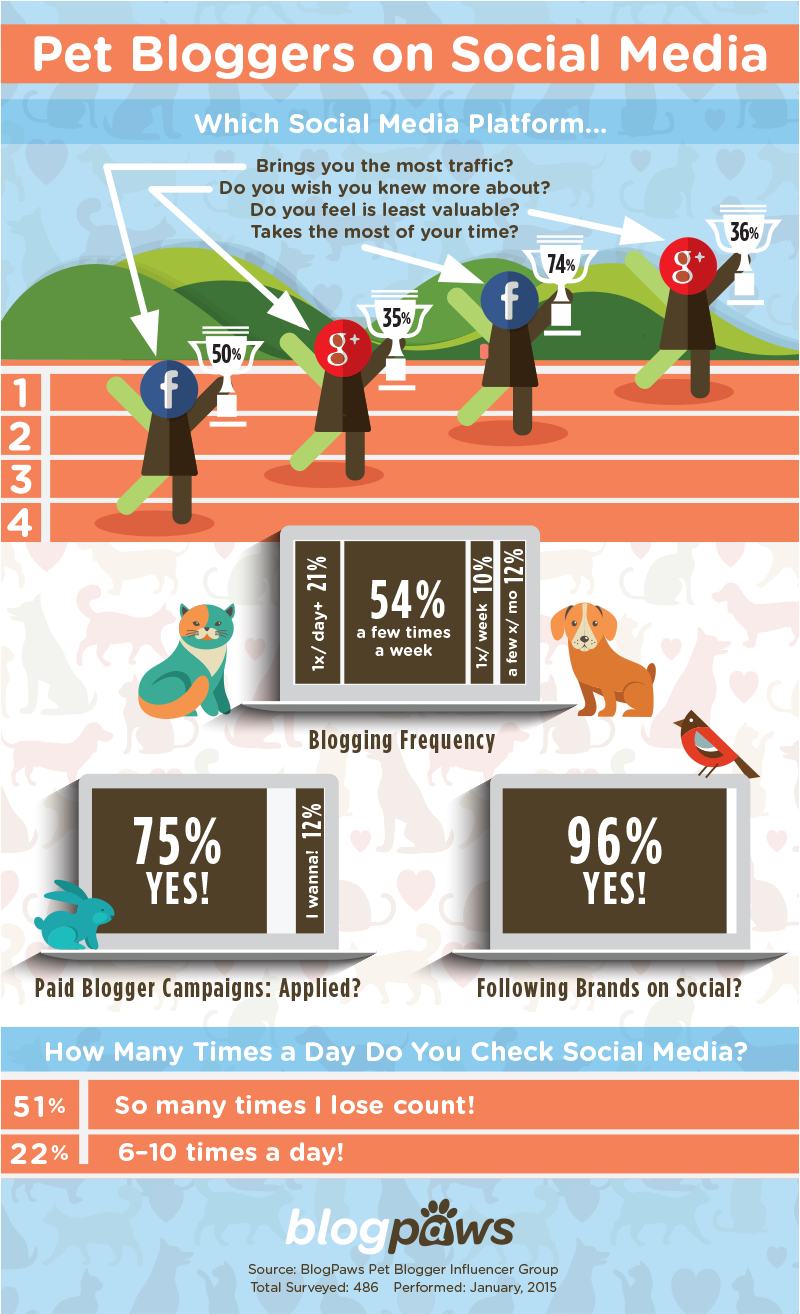Beginner’s Guide to Creating Video Content for Social Media with Your Pet
Why is creating video content for social media so important? As social media evolves, video content is becoming increasingly popular. TikTok has taken the lead in the shift towards video, with Instagram Reels following close behind. These platforms allow creators to express themselves and connect with their audience. The ability to create short-form, digestible videos has led to an explosion of content like never before.
Why Creating Video Content for Social Media is Important
Wyzeowl holds an annual survey where they ask a series of questions to evaluate the state of video marketing and its increased popularity. The summary of the survey finds that video use is at an all-time high and that “more marketers credited video with increasing dwell time, traffic, leads, sales, and reduced support queries than in ANY of our annual surveys since 2015, – while an all-time high number of marketers (92%) told us they get a good ROI on video content, up from 87% in 2022” (HootSuite State of Video Marketing).
The numbers speak for themselves!
What to Consider Before Filming Animal Videos
When filming a video with your dogs or cats, there are several considerations to keep in mind before you start. Whether you film at home or on location, there is extensive planning (and treats!) to consider before each shoot. I’ll use filming my own dog, Elvis, as an example.
Let’s start with filming outdoors and the items you need to consider before embarking on your shoot:
Time of Day
When will you and your dog be most productive? If it’s morning, will your dog get breakfast before you go or later when you return? Does your dog focus better on an empty stomach? (That’s a big NO for Elvis because he’s a beagle! I would get zero accomplished if I took a hungry dog out to film)
The Weather
This is a big one in San Diego. It’s usually bright and sunny, which makes for poor filming conditions, except during the pseudo-seasons called May Gray and June Gloom. During these months, the marine layer is more noticeable due to the temperatures rising on land more quickly than on the water. This forms a nice fog that is visible for most of the morning (though last year, it was almost consistently around noon).
Camera Supplies
Will you use a tripod, or are you shooting handheld? If handheld, what about selfie sticks and gimbals?
Treats
One of the key factors to consider when talking about how to film dogs is how you will motivate them. Will you use treats with your dog? What kind of treats? Elvis’s energy depends on the value of the treats. For example, when we practiced agility, I would use high-value treats because I wanted him to be amped and excited to run. For calmer activities like filming and nose work, I use low-value treats.
Water!
Don’t forget about water for you and your dog. When filming in May and June here in San Diego, the air is still humid even though the temperatures are cooler. Also, as a personal preference, I don’t like to film Elvis when he is hot or panting because, out of context, a panting dog could also be viewed as a stressed dog.
Filming indoors still requires some planning, but the weather isn’t as important unless you are using natural light.
Set
You probably have some idea of what you will be shooting. Will your dog be doing something specific where they need to stay in one place? Will this require a tripod? When creating video of cats and dogs, you will also need to consider (and reduce) distractions.
Lighting
Are you using natural light? If so, the weather is an important thing to watch, along with the time of day. If you’re using
How to Film Animals: Step-By-Step
Types of Content
The types of content I film with Elvis fit loosely into two categories: candid and staged. Candid is usually easier because it doesn’t require anything extra from Elvis. I’m filming him in his natural element instead of asking him for specific behaviors. However, good recall is required when filming candidly and outdoors (for example, when I’m following him around the dog beach). While he is allowed to set the pace, I still need him to return to me when called!
Staged content requires more cooperation and patience (on both sides!). For example, if I need him to run across the frame from one end to another repeatedly, I set up a target on each side (outside of the frame). Then I ask him to run to either target.
When it’s Time to Cut
When creating video content for social media, understanding your dog’s body language is key to knowing when they’re done filming. While candid content is easier in theory, that doesn’t mean that Elvis can necessarily film forever. When recall is lagging or focus is waning, it’s time to call it quits.
It’s easier to take breaks with candid content because we can change the environment by continuing to walk; the only thing that changes is that I stop filming.
With staged content, leaving your set is more difficult if you’re outdoors or in public. So, I usually have a small window to get a shot with this type of content.
For the staged shoot above, I actually took Elvis to this painted wall three days in a row. We went very early in the morning, so there weren’t any people. But I kept our sessions very short since I was asking him to work (going target to target). Even with breaks in between, we both got restless from being by the wall on that first day, setting the pace for the following two days. While we could take breaks, we couldn’t leave our set.
We spent 20-30 minutes total there each morning, which included setting up, filming and breaks. It was plenty of time. By the third day, we were pros and able to get the shots. I also found that the first two days provided good practice for us both and set us up for success on the third day. It was more important to me that we’re both having a positive experience vs cramming and overworking to get the shot in one session.
Reward and Celebrate
In any instance, it’s always important to remember to end your session on a good note, just as you would with training. You want the experience to be positive for your dog or cat!
Consider including some of your pet’s favorite treats as a reward for a successful (or less than successful) shoot. You can follow up your session with a game of fetch, tug, or a walk to give your pet an outlet for any pent-up energy.
Do you have any tips that help you when creating video content for social media? We’d love to hear them in the comments!
About the Author: Christy Castillo, BlogPaws Director of Brand and Creative, has worked in the pet industry for 7+ years helping brands with graphic design, branding, video editing, and cinematography. When she’s not working or studying to become a dog trainer, she’s exploring the beach and filming videos of her dogs. Read more…






